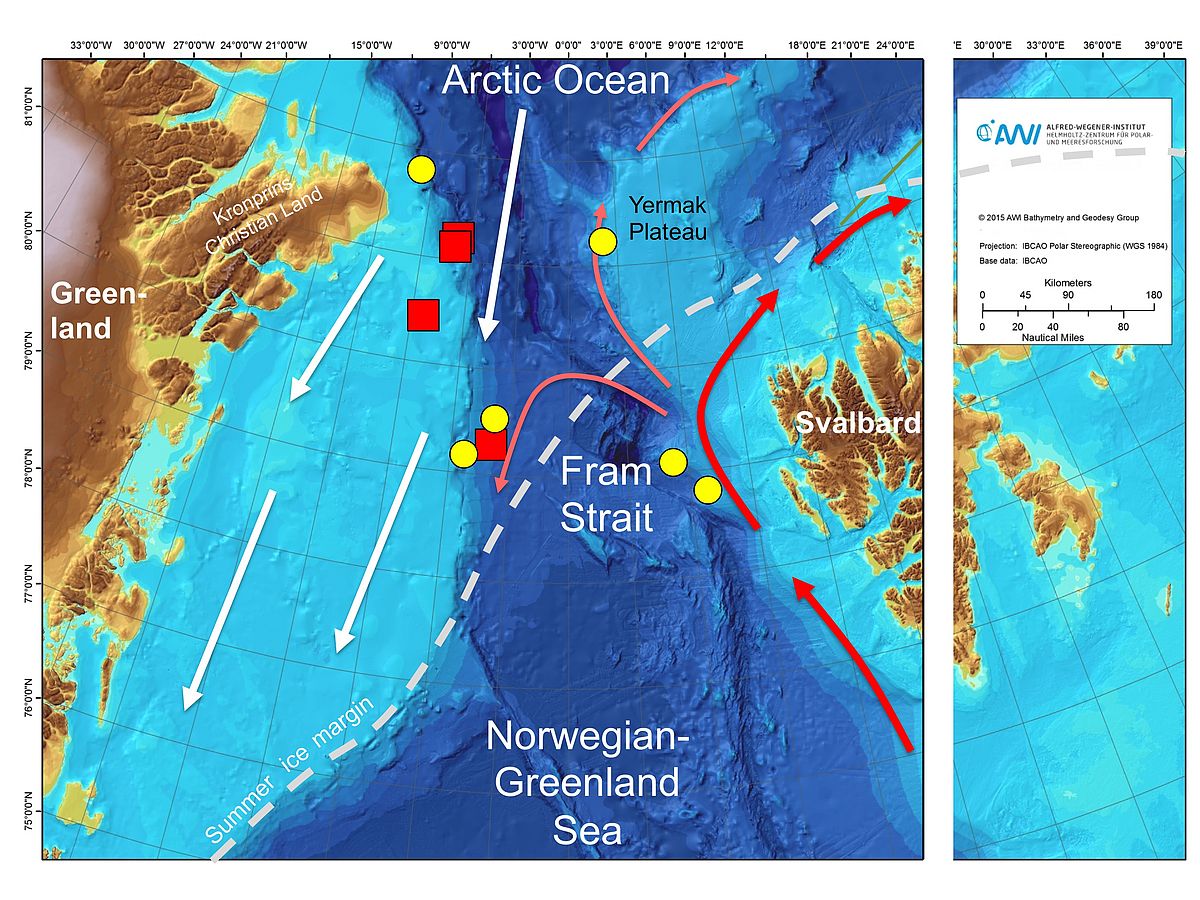Contact: Dr. Robert F. Spielhagen
Marc Zehnich
The ECHONEG project aims at reconstructing the environmental variability off and in Northeast Greenland during the Late Quaternary (last 130,000 years) at a yet unprecedented temporal resolution (decades to centennials).
The research area at ca. 81-82°N, 7-9°W in the western Fram Strait is the main export region for freshwater and sea ice from the Arctic Ocean to the Nordic Seas (Fig. 1). This cold and low-saline outflow in the West and the strong contrast to the relatively warm, saline northward advection of Atlantic Water in the East provide oceanic conditions that allow for the formation of dense near-surface water masses which eventually sink to depth and eventually drive the Atlantic meridional overturning circulation (AMOC). Numerical modelling experiments and marine geological research have shown that this system is highly sensitive to freshwater perturbations and has been weakened (or halted) several times in the last glacial-interglacial cycle. It is currently under threat due to enhanced freshwater outflow from the Arctic, including meltwater from the Greenland ice sheet.
Reconstruction of environmental parameters by analyses of sediment cores
The goals of the project are to reconstruct the variability of Arctic freshwater export and sea ice coverage, their relation to the variability of Atlantic Water advection, the potential linkages of AMOC weakenings and extreme freshwater export events (e.g., during the Younger Dryas interval), and the variability of glaciation on North Greenland during the Late Quaternary. To do this, a multiproxy approach is applied to investigate long, large volume sediment cores (marked in red in Fig. 1) obtained from RV POLARSTERN in summer 2015 from the NE Greenland continental margin and the shelf, applying sedimentological, micropaleontological, isotopical and organic-geochemical methods. First results show that a decadal- to centennial-scale resolution can be reached, which is by far better than in earlier studies in the area. Expected results are detailed data on the variability of ice coverage, freshwater export, salinity, temperature, stratification, primary productivity and onshore glaciation in an area that is interacting quickly and closely with global climate. They will significantly improve our understanding of Arctic land-ocean-ice-climate interactions and their consequences, e.g., in the dramatic Arctic warming trend in the last 150 years.
Cooperation: Alfred-Wegener Institute Helmholtz Centre for Polar and Marine Research
Funding: 01/2017 - 12/2019 by Deutsche Forschungsgemeinschaft (grant SP 526/5-1)



